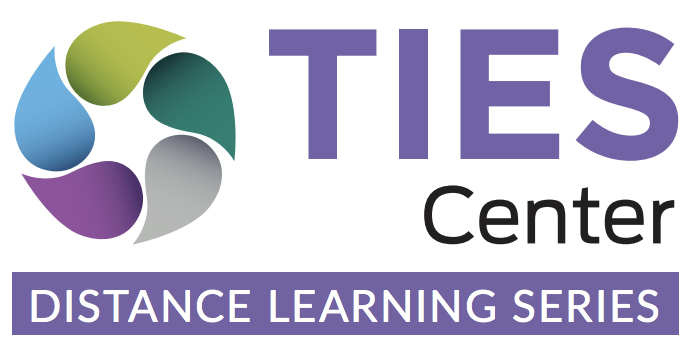TIES Center Provides Tips Online to Quarantined Teachers and Families
School districts, teachers, students and families are struggling as they try to close out the academic year online. Districts worry about complying with educational requirements, particularly for students with disabilities. Teachers grapple with students’ uneven access to technology and to support at home. Students try to pick up what learning they can, but there are concerns many of them are sliding backwards in their skills. Parents are overwhelmed balancing work and their new teaching responsibilities at home.
ICI’s TIES Center is responding to these needs with a series of online articles that give teachers and families practical tips on navigating the educational process under quarantine conditions.
“We’re hearing about a lot of confusion and doubt about whether online learning is even possible, particularly for students with significant cognitive disabilities. We want to make sure educators and families alike know that it is, indeed, possible,” said ICI’s Kristin Liu, co-principal investigator of the TIES Center (TIES stands for Increasing (T)ime, (I)nstructional Effectiveness, (E)ngagement, and State (S)upport for Inclusive Practices for students with significant cognitive disabilities). TIES is a national technical assistance center on inclusive educational policies and practices.
The series offers a framework for using online tools to gradually boost students’ access to and engagement in virtual classrooms.
One article in the series shares the story of Olivia, a 13-year-old who loves music, science, and Disney and who also lives with autism. Her mom, Jen, is a fellow in MNLEND, ICI’s leadership development program in the neurodevelopmental disability field.
Jen shares her story of how quarantine life has affected Olivia’s sleep, daily routines, and stress levels. Then, the module offers some practical take-aways for teachers and parents, such as prioritizing lesson concepts, working school lessons into daily household activities, and deciding on a number of times a lesson will be attempted before moving on.
“We understand this is not an easy time for anyone in the field, and it’s been overwhelming for parents to figure out how to do distance learning,” said Gail Ghere, an ICI investigator who helped create the series. Written by a number of TIES Partners, each article is designed to support teachers, students and families. They start with educational activities to link skills with daily routines at home and progress to new online tools for more inclusive and academically rigorous virtual instruction. The series also acknowledges schools’ and families’ varied access to technology, offering hi-tech and low-tech options for learning strategies.
Even though the shift is still in its early stages and was a response to the pandemic, the potential exists to make long-lasting improvements in inclusivity for students with disabilities through the increased use of technology, Ghere said. When all students are using devices to contribute to a classroom discussion, for example, students using alternative and augmentative communication devices may be more comfortable participating in class discussions or chatting with a classmate without disabilities.
“These changes weren’t planned, but the fact is there is a lot of learning going on at the moment about how kids with disabilities can access curriculum and interact with their classmates,” Ghere said. “We want to build on that and not go backwards.”
